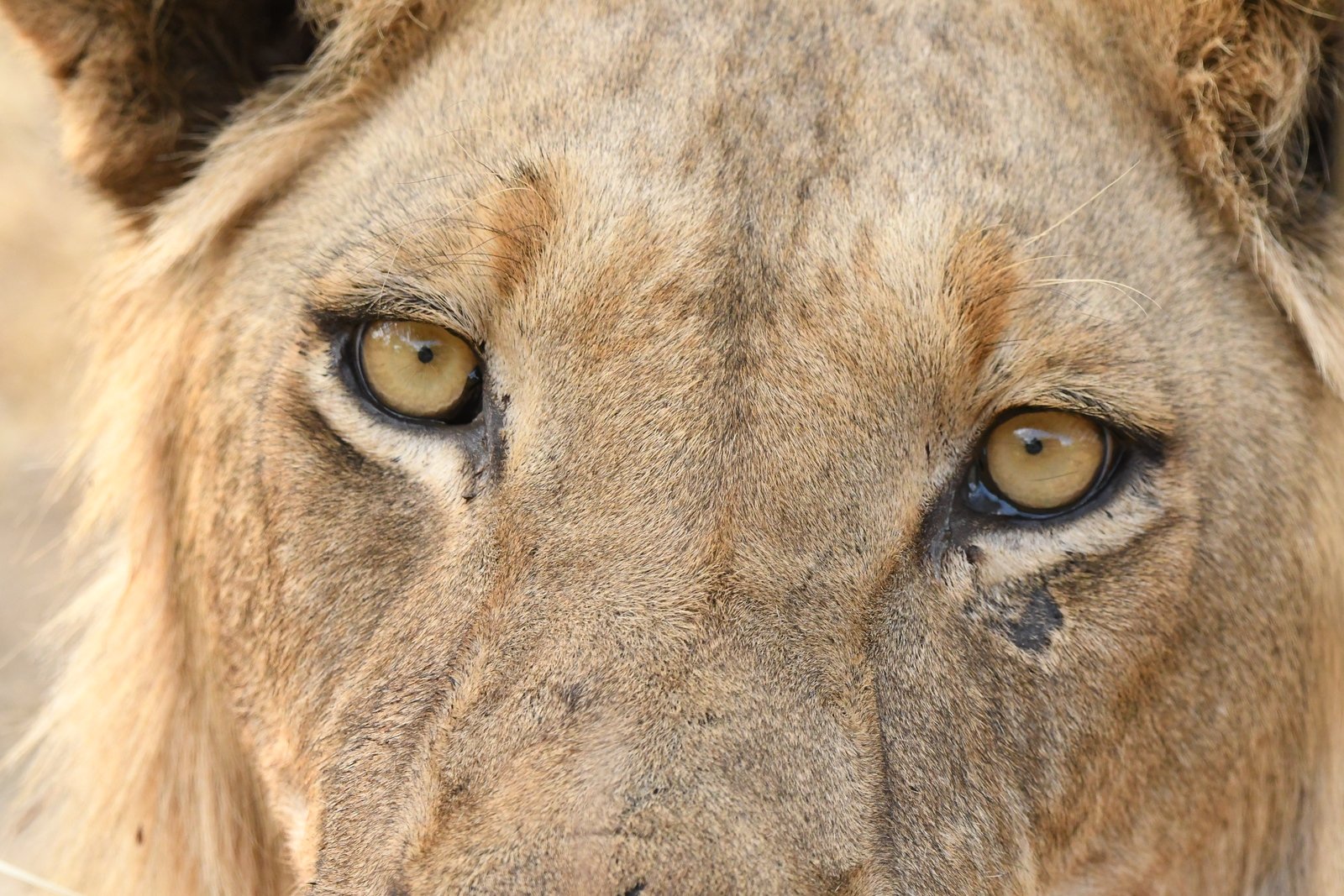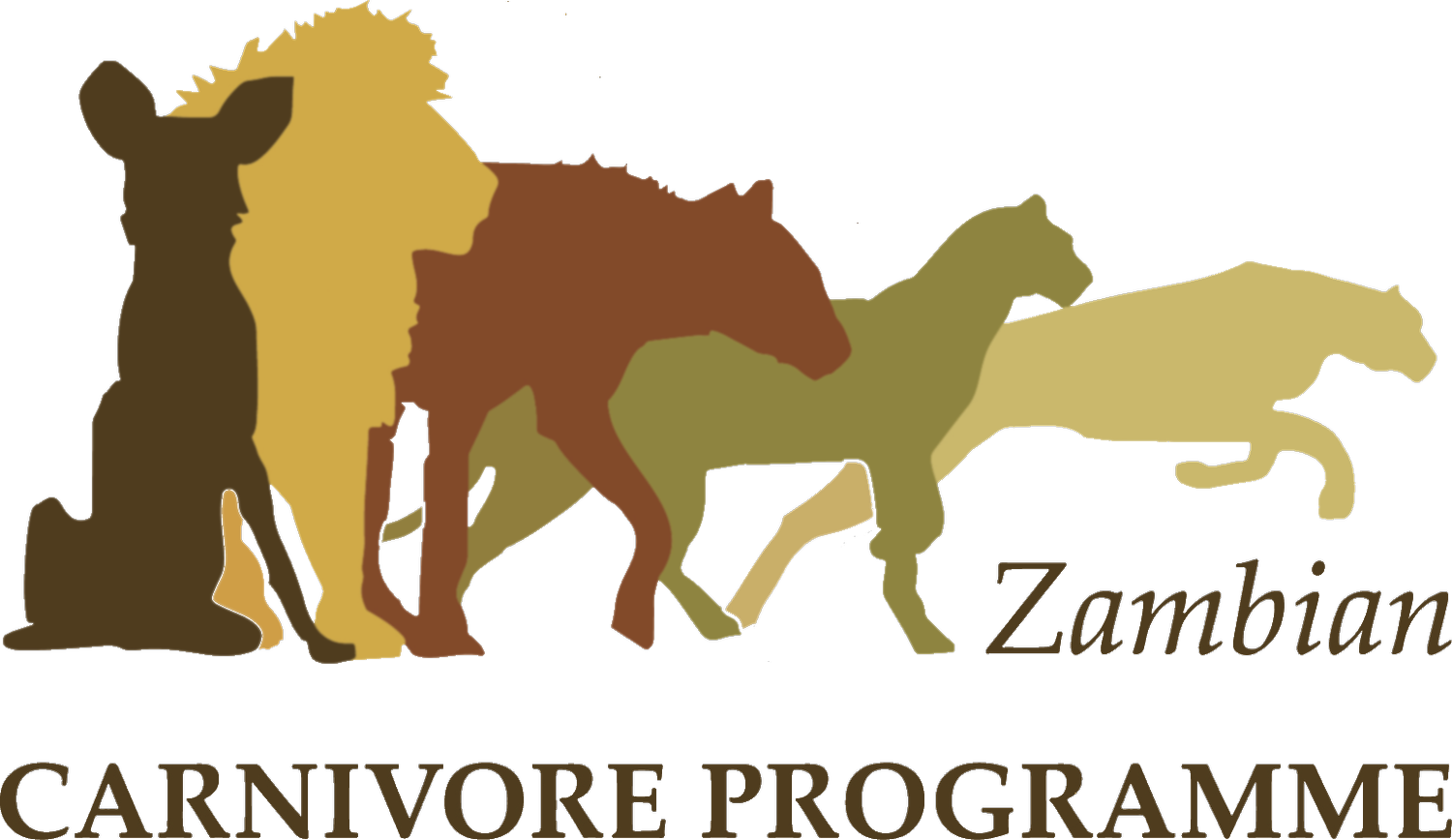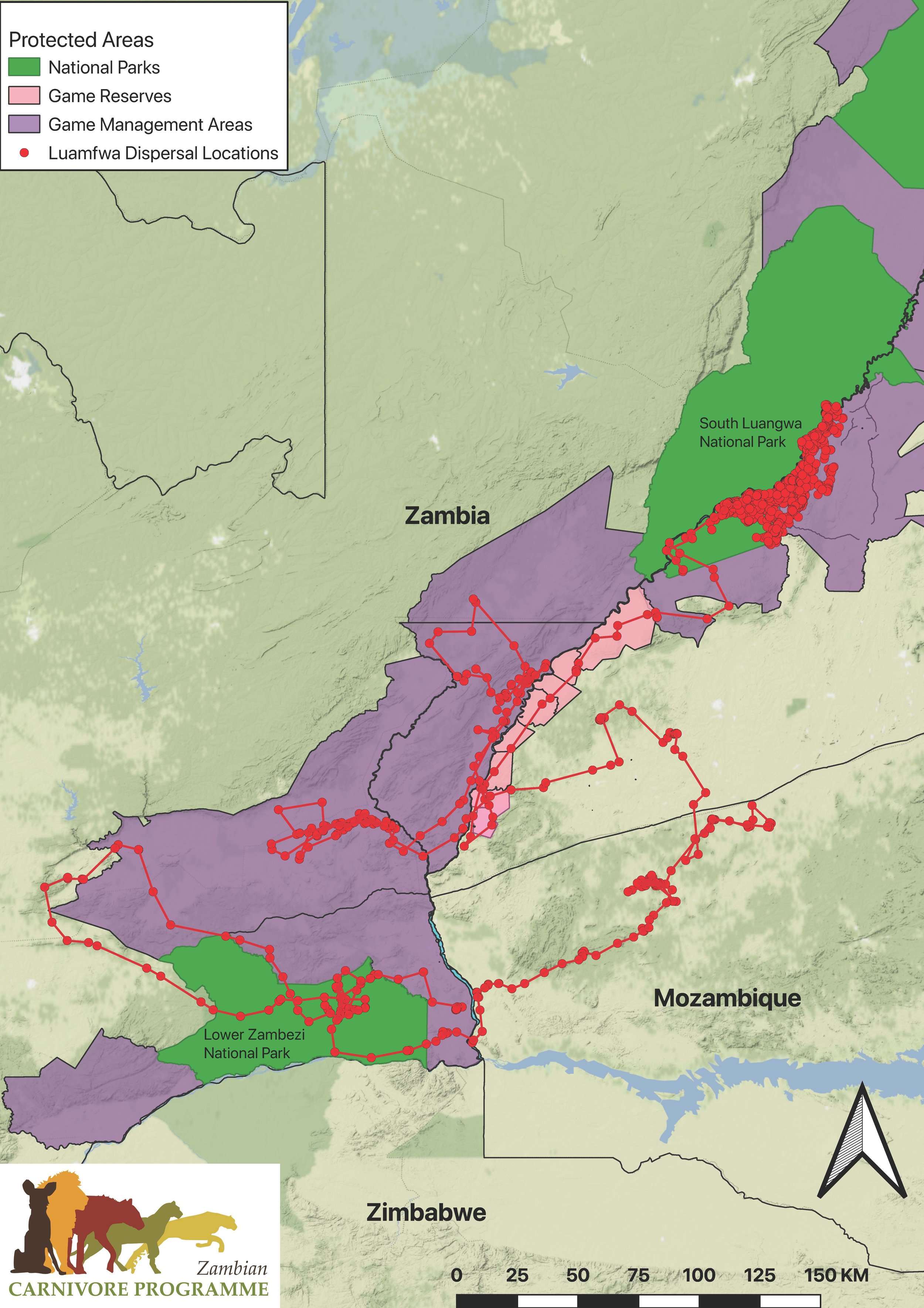
Conservation Action
Not surprisingly, the diversity of biological, environmental and human variables across ZCP study sites results in a variety of threats and limiting factors to carnivores and their habitats. While accurate and current research is needed to effectively inform conservation efforts, eminent threats identified by research require immediate attention. Consequently, ZCP has a wide range of collaborative conservation initiatives.
A study lion from Luangwa was rescued from a deadly snare wound. Several months later, she was seen mating and produced cubs!
Bushmeat & Anti-Snaring
One of the most important human impacts on many African ecosystems has been the burgeoning bushmeat trade. Where meat poaching occurs, wire snaring is a popular method given that snares are inexpensive and easy to obtain, set, and conceal, in addition to being very effective. Due to their non-selective nature, however, snares can inflict significant injuries and mortality on a variety of species.
Snaring occurs throughout the study systems, though appears particularly pronounced in the Luangwa and Kafue ecosystems. In the Luangwa valley we have a long-standing collaboration with Conservation South Luangwa to combat snaring and reduce its impacts on large carnivores such as African wild dog and lion. In addition to this we conduct research and monitoring on snaring trends and patterns and rescue animals caught and injured in snares. In Kafue and Liuwa we also collect data on snaring impacts and rescue snared carnivores.
A detection dog for CSL-DNPW trained to find trafficked leopard and other big cat skin. Photo: Edward Selfe Photo Safaris
Wildlife Crime
Concurrent with the bushmeat and ivory crisis there is increasing evidence of a trade in carnivores, particularly big cat skins and parts. In collaboration with DNPW, Wildlife Crime Prevention, and Conservation South Luangwa (CSL) we work to combat the emerging trade in big cats. Little is known about the extent or severity of the trade, much less its impacts on carnivores. Given that carnivore populations are wide-ranging and low-density to begin with, impacts from illegal trade may not become apparent until severe without attention.
Large Landscape Connectivity
Zambia borders 8 countries and has multiple large expanses of connected, unfenced land of over 70,000 km2. This makes maintaining large landscape connectivity of critical importance, particularly in the face of climate change. We conduct collaborative work on an array of topics regarding large landscape conservation, including mapping and addressing human encroachment issues, collaborating on conservation strategies for transfrontier conservation areas, investigating the impacts of transportation and roads on wildlife movements, assisting in land-use planning and watershed conservation, and promoting wildlife-based economies.
Human-Wildlife Conflict and Coexistence
Large carnivores are often at the center of human-wildlife conflict and thus ZCP works with conservation partners to conduct an array of human-wildlife conflict evaluations and mitigation work. At present, due to the lack of livestock in the Luangwa and Kafue and effective husbandry techniques in Liuwa, the level of carnivore conflict is fortunately moderate; however this is changing with increases in human encroachment into protected area networks. Poisoning is rapidly becoming one of the major threats for wildlife in Africa. While previously not significant for Zambia, there has been an increasing and alarming trend in and around protected areas such that poisons response training and poisoning mitigation work is critical.
Vaccinating domestic dogs to prevent disease outbreaks. Photo: Thandiwe Mweetwa/ZCP
Disease Mitigation
Domestic dogs are often the primary source of disease transmission to wild carnivores, and also pose human health threats from rabies and other diseases when not vaccinated. Given rapid growth in human populations it is imperative to implement disease control measures focused on domestic animals, given the difficulties in effectively vaccinating wild populations. We conduct vaccination programmes as well as animal welfare and husbandry education in communities to reduce the spread of disease between domestic and wild carnivores. In addition, we support a domestic animal clinic with CSL aimed at providing vaccinations, spaying and neutering. Collectively this helps lessen the risk of catastrophic disease outbreaks in threatened populations while protecting communities.
The first lion cubs born in Liuwa in over a decade thanks to collaborative restoration efforts of APN, DNPW, and ZCP. Photo: Dr. Matthew Becker/ZCP
Species Reintroduction
In some instances human pressures have led to the disappearance or severe reduction of certain carnivore species that historically occurred in African ecosystems. Consequently reintroductions provide one of the most immediate and obvious conservation activities for large carnivores should natural recolonization not be a viable or realistic option. ZCP has therefore assisted African Parks Zambia in reintroducing lions into Liuwa Plain National Park and is involved in additional reintroduction plans of other species in Zambia.








